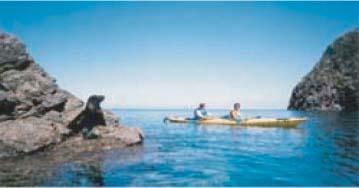Chemistry at the Interface
Andrew D. Abell AA Department of Chemistry, University of Canterbury, Christchurch, New Zealand (e-mail: a.abell@chem.canterbury.ac.nz).
Australian Journal of Chemistry 57(9) 819-819 https://doi.org/10.1071/CH04180
Submitted: 2 August 2004 Accepted: 2 August 2004 Published: 1 September 2004
The theme for the most recent New Zealand Institute of Chemistry (NZIC) conference held in Nelson was ‘Chemistry at the Interface’ and that’s exactly what the twelve plenary speakers, invited speakers, section lecturers, and hundreds of posters presented. Close to 400 delegates, from a range of chemical backgrounds, were treated to the best of international and local speakers in a programme that provided a glimpse into the future of chemistry and also, importantly, an insight into the discipline’s past and evolution.
This issue of the Australian Journal of Chemistry compiles some of the outstanding science presented within the framework of the conference symposia; the interface of chemistry and biology, techniques of chemistry at the interface, the interface of chemistry with the commercial sector, and the interface of chemistry with materials and nanotechnology (Fig. 1).

|
Bill Denny[1] provides an insightful discussion on the design of drugs that target tumor hypoxia. This approach to tumour-selective agents has lead to some internationally important findings and a deeper understanding of the biology of tumours. Ted Baker[2] reviews recent advances in the area of structural analysis in his article. This work highlights a critical link between advances in molecular biology and in structural determination by X-ray crystallography. David Fairlie[3] continues the theme of the biology/chemistry interface, presenting an outstanding summary of some minimalistic approaches to structural mimetics of amino acids and of strand, turn, and helix segments of proteins. Gary Evans[4] presents an overview on the design and synthesis of transition state analogue inhibitors of N-ribosyl transferases and their current therapeutic uses and potential. This is a real success story in New Zealand-based medicinal chemistry. The medicinal chemistry theme continues in a paper by Andrew Abell and coworkers[5] on the synthesis and anti-cataract properties of peptidic aldehydes.
A true highlight of the conference was a presentation by Dieter Seebach[6] on his pioneering work on the creation of new secondary structures derived from β- and γ-peptides, and aspects of this work are discussed here.
This special issue also contains two papers that present work at the interface of organic and inorganic chemistry. Peter Steel and coworkers[7] present the first examples of 2,2′-bipyrimidine ligands incorporating bulky or chiral substituents, and Jonathan White and coworkers[8] present insights into the directing effect of both silicon and tin on the Tiffeneau–Demjanov reaction.
An important piece of work from Martin Banwell[9] on a chemoenzymatic and enantioselective route to the tricyclic sesquiterpene frameworks is also highlighted in this issue. Martin has strong connections with New Zealand Chemistry, being a New Zealander by birth.
We hope the papers in this issue will interest you and perhaps inspire you to come to the next NZIC meeting.
Andrew Abell
Conference Chair
[1]
W. A. Denny,
Aust. J. Chem. 2004, 57, 821.
| Crossref | GoogleScholarGoogle Scholar |
CAS |
| Crossref | GoogleScholarGoogle Scholar |
CAS |
| Crossref | GoogleScholarGoogle Scholar |
CAS |
| Crossref | GoogleScholarGoogle Scholar |
CAS |
| Crossref | GoogleScholarGoogle Scholar |
CAS |
| Crossref | GoogleScholarGoogle Scholar |
CAS |
| Crossref | GoogleScholarGoogle Scholar |
CAS |
| Crossref | GoogleScholarGoogle Scholar |
CAS |
| Crossref | GoogleScholarGoogle Scholar |
CAS |



